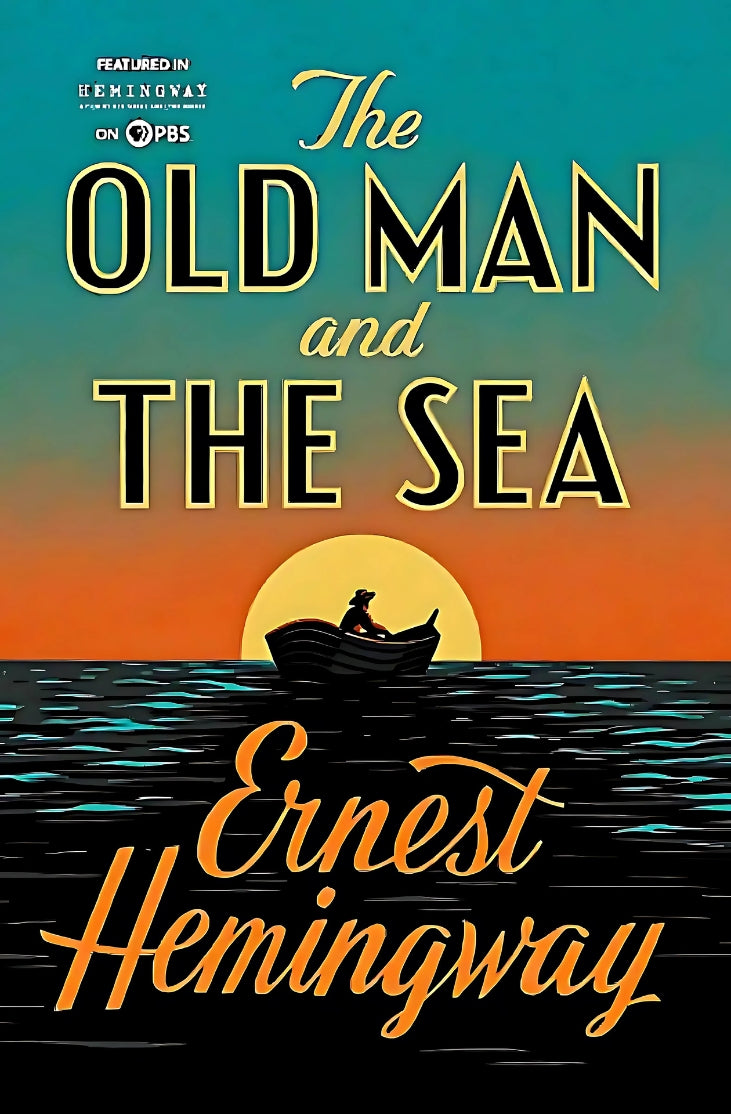Bust-Down Books
The Old Man and the Sea by Ernest Hemingway
The Old Man and the Sea by Ernest Hemingway
Couldn't load pickup availability
The Old Man and the Sea
by Ernest Hemingway
Nobel Prize-Winning Book for Literature
Overview
An aging fisherman named Santiago, deemed "salao" after an 84-day streak without a catch, embarks on a perilous journey to capture the biggest fish of his life. Set in the Gulf Stream off the coast of Havana, this classic fable captures both the beauty and the sorrow inherent in man's struggle against nature.
Narrative Journey
Hemingway's masterpiece follows Santiago as he faces the relentless forces of nature and his own physical limitations. His epic battle with a giant marlin becomes a profound exploration of human endurance, the value of resilience, and the inevitable confrontation with the natural world.
Key Themes
Through Santiago’s journey, Hemingway examines the complexities of human nature, the indomitable spirit that drives us forward, and the stark realities of life at sea. The narrative is a timeless meditation on struggle, hope, and the eternal battle between man and the elements.
Final Reflections
The Old Man and the Sea remains a powerful testament to the enduring strength of the human heart. With its concise, evocative prose, the novel continues to inspire readers by showcasing the beauty, grief, and unyielding determination that define the human experience.
Synopsis
In Ernest Hemingway's iconic novella The Old Man and the Sea an aging fisherman named Santiago embarks on a perilous journey to catch the biggest fish of his life.
Facing the relentless forces of nature and his own physical limitations, Santiago's determination and resilience are put to the ultimate test.
Through his epic battle with a giant marlin, Hemingway explores the complexities of human nature, the indomitable spirit of man, and the beauty and cruelty of the sea.
About the Author: Ernest Hemingway
Ernest Miller Hemingway (1899-1961) was a renowned American novelist, short-story writer, and journalist, known for his distinctive, economical writing style that greatly influenced 20th-century literature.
He was also recognized for his adventurous and public image, often romanticized. His most famous works include The Sun Also Rises, A Farewell to Arms, For Whom the Bell Tolls, and The Old Man and the Sea, the latter earning him the Pulitzer Prize and the Nobel Prize for Literature in 1953 and 1954, respectively.
Early Life and Career:
- Born in Oak Park, Illinois, on July 21, 1899.
- He began his writing career as a reporter for the Kansas City Star after graduating from high school.
- He volunteered as an ambulance driver in Italy during World War I where he was wounded and decorated.
- He later became a reporter for Canadian and American newspapers, covering events like the Greek Revolution.
- He was a member of the Lost Generation, a group of expatriate American writers and artists who lived in Paris after World War I.
Literary Style and Themes:
- Hemingway's writing style is characterized by its simplicity, directness, and use of short sentences and understated language.
- He often explored themes of war, loss, masculinity and the meaning of life—and death. Often with a focus on individual experiences and the search for meaning.
- His works often featured strong, resilient characters facing difficult circumstances.
Selected Works:
The Sun Also Rises (1926): Explores the lives of expatriate Americans in Paris.
A Farewell to Arms (1929): A novel about an American ambulance driver's experiences during World War I.
For Whom the Bell Tolls (1940): A novel based on Hemingway's experiences as a reporter during the Spanish Civil War.
The Old Man and the Sea (1952): A short novel about an old Cuban fisherman's struggle with a giant marlin.
A Moveable Feast (1964): A collection of memoirs published posthumously.
Later Life and Death:
- Hemingway suffered from physical and mental health issues, including war wounds, injuries from two plane crashes, and mental illness.
- He was diagnosed with bipolar disorder and insomnia and experienced memory loss after an unsuccessful treatment with electroconvulsive therapy.
- He committed suicide on July 2, 1961, in Ketchum, Idaho.





